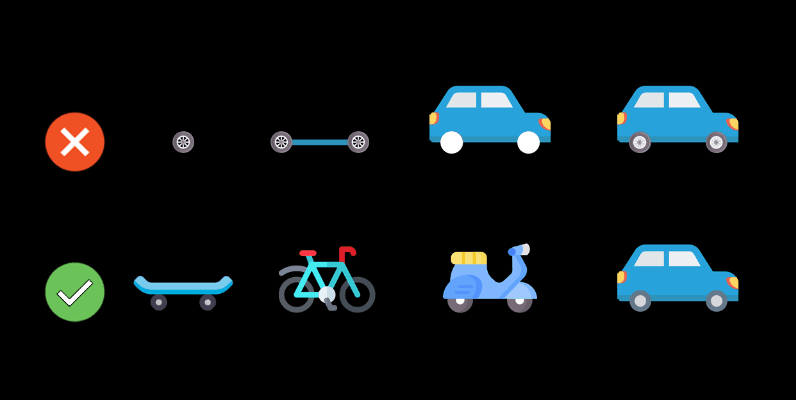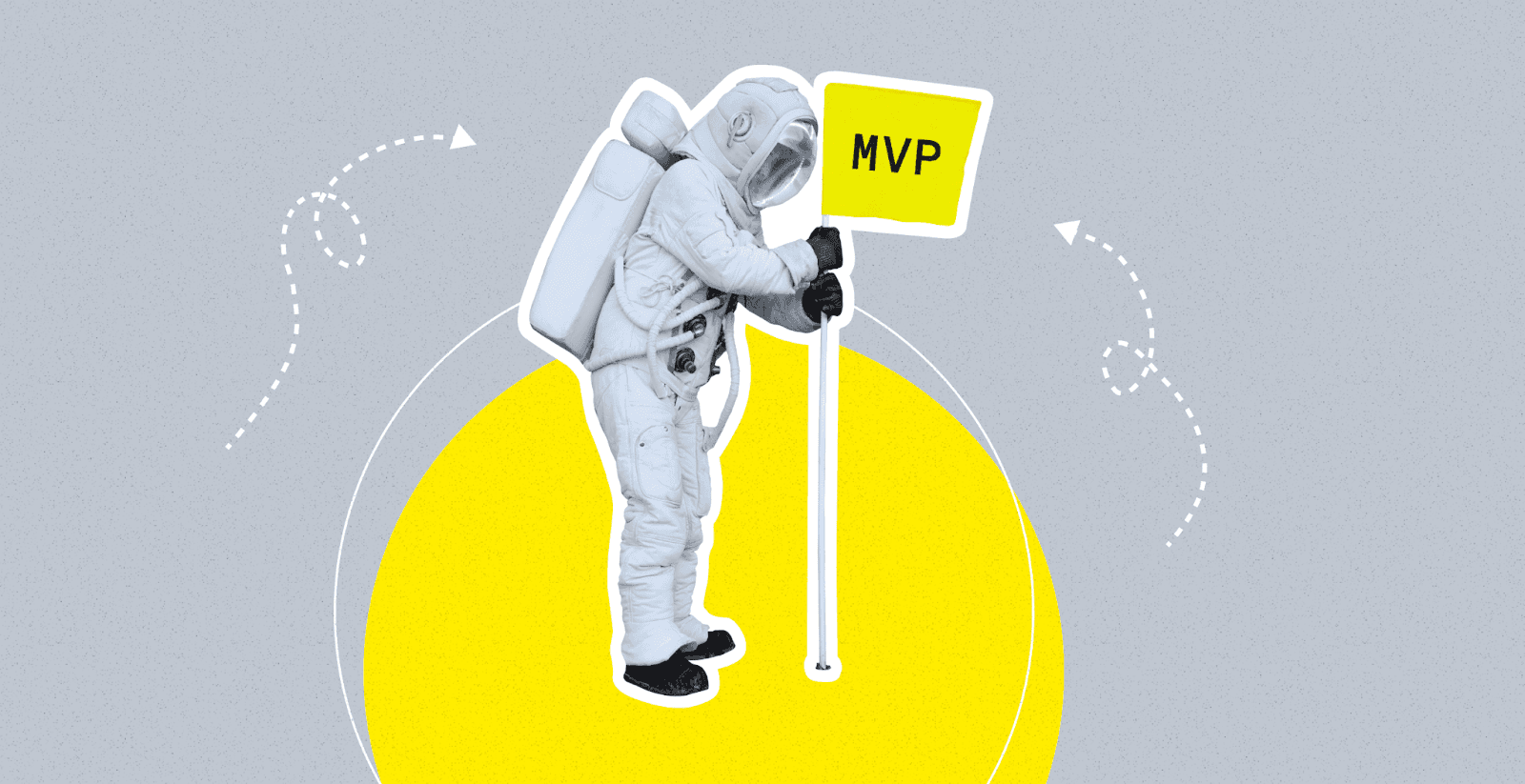MVP Development Process: A Blueprint for Startups
 Marketing IBTI#Marketing IBTI
Marketing IBTI#Marketing IBTIIn the fast-paced world of startups, success often hinges on the ability to create a winning product. But how do you do that without breaking the bank or wasting time? The answer lies in the MVP Development Process – a smart and practical blueprint that has transformed the startup landscape.
Minimum Viable Product is a strategic approach that has revolutionized the way startups develop and launch their products.
In this blog post, we’ll take you on a journey through the MVP development process, exploring its significance, benefits, and steps to create a successful MVP.
So, if you’re a budding entrepreneur or an established business owner, understanding the MVP development process can be a game-changer for your venture.
What is an MVP?
Creating an MVP is a critical step for any startup that wants to bring a new product to market. An MVP (Minimal Viable Product) is a version of your product that has just sufficient features to be useful to early customers. It allows you to test your product hypothesis and get feedback from real users before you invest a lot of time and money into development.
Benefits of an MVP
The Benefits of Adopting an MVP Approach for Startups:
Cost-Effectiveness
Developing an MVP allows startups to save money by focusing only on essential features and avoiding unnecessary expenses on additional functionalities.
Faster Time to Market
With a streamlined development process, startups can launch their MVP quickly, gaining an early market presence and potential customer feedback. So, MVP is necessary because it helps you gain valuable market insights, preventing the failure faced by 34% of startups.
Risk Mitigation
By testing the core concept first, startups can identify potential flaws and make improvements before investing more resources into a full-scale product.
User-Centricity
The MVP approach emphasizes gathering user feedback, enabling startups to tailor their product based on real user needs and preferences.
Market Validation
Launching an MVP helps validate the demand for the product, ensuring that there is a viable market before engaging in a full product launch.
Competitive Advantage
Startups can gain a competitive edge by being the first to offer a solution, learning from early adopters, and iterating rapidly based on feedback.
Learning Opportunities
The MVP process provides invaluable insights into user behavior and preferences, enabling startups to make data-driven decisions for future iterations.
Efficient Resource Allocation
By focusing on essential features, startups can allocate resources more efficiently, avoiding unnecessary expenses on features with low demand.
Scalability
Building on the success of the MVP, startups can gradually scale their product, incorporating additional features based on validated user feedback.
Investor Confidence
A well-executed MVP demonstrates a startup’s ability to execute a viable idea, increasing investor confidence and attracting potential funding.
How to Develop an MVP

Let’s explore the below actionable steps on how to create a successful MVP:
Step 1: Ideation and Problem Identification
- Start by identifying a problem or pain point that your product aims to solve. Understand the target audience and their needs thoroughly.
- Brainstorm ideas and concepts that could address the identified problem. Focus on simplicity and feasibility for the initial MVP.
Step 2: Define the Core Value Proposition
- Determine the core features and functionalities that deliver the primary value of your product. These features should directly address the identified problem.
- Keep the MVP focused and avoid unnecessary bells and whistles. Remember, it’s about offering a functional solution, not a fully polished product.
Step 3: Market Research and Validation
- Conduct market research to measure the demand for your product. Identify competitors and know their strengths and weaknesses.
- Validate your MVP idea by reaching out to potential customers, getting feedback, and understanding if they would find your solution valuable.
Step 4: Plan the MVP Development
- Outline a clear roadmap for the development process. Define milestones, set a timeline, and allocate resources efficiently.
- Consider using an agile development approach to allow flexibility in responding to user feedback and changing market demands.
Step 5: Design and Prototyping
- Create wireframes and mockups to visualize the user interface and user experience. Ensure the design is intuitive and user-friendly.
- Develop a clickable prototype that demonstrates the core features and flows of your MVP.
Step 6: Develop the MVP
- Choose the right technology stack and start developing the MVP based on the defined features and design.
- Prioritize building the essential functionalities that deliver the core value proposition.
Step 7: Test and Iterate
- Test the MVP thoroughly to identify any bugs or usability issues. Conduct user testing to collect feedback from real users.
- Use the feedback to make improvements and iterate on the MVP. Iterative development ensures continuous enhancement.
Step 8: Soft Launch or Limited Release
- Consider a soft launch or a limited release to a small group of early adopters. This allows you to gather more user feedback and validate the MVP further.
- Monitor user behavior and gather data to understand how users interact with your product.
Step 9: Analyze and Refine
- Analyze the data collected during the soft launch. Measure key metrics and determine if the MVP is achieving its objectives.
- Refine the MVP based on the insights gained, and implement necessary changes to enhance the product.
Step 10: Full Launch and Scale
- Once you have a solid MVP with positive user feedback, it’s time for a full launch. Scale your marketing efforts and reach a broader audience.
- Continue to listen to user feedback, iterate, and improve the product as you grow.
How much does it cost to build an MVP?

The cost of building an MVP varies based on several factors. On average, the cost can range from $15,000 to $150,000 or more, depending on the complexity, features, and technology involved in the project. It’s essential to work with a reputable development company to get an accurate estimate tailored to your specific requirements.
Are you struggling to bring your software idea to life? Introducing IBTI’s MVP Development Services!
- Transform your concept into reality with our expert team and user-centric approach.
- Save time and money with our efficient process and iterative development.
- Validate your product’s potential with user feedback and market insights.
- Unlock your software’s success and gain a competitive edge in the market.
Let IBTI handle the complexity while you focus on launching your product. Get started today!
Wrapping up
In essence, the MVP development process is a strategic approach for startups to validate their ideas, minimize risks, and deliver value to early adopters. By following this blueprint and leveraging user feedback, entrepreneurs can pave the way for a successful product launch and future growth. Remember, it’s not about building a perfect product from the start but rather a functional one that evolves based on user needs and market demands.
FAQs
Which tasks need to be completed as part of the MVP in development components?
The tasks that need to be completed as part of the MVP in development components include defining problem statements, identifying key features, and creating user interfaces and functionality to validate the core idea and gather user feedback.
Is MVP lean or agile?
MVP is more closely associated with the lean startup methodology, which emphasizes rapid prototyping and iterative development to validate ideas and minimize waste. However, it can also be incorporated into agile development processes to adapt and respond to changing requirements.
What are the benefits of adopting an MVP approach in software development?
Adopting an MVP approach offers several benefits, including reduced development costs, faster time to market, risk mitigation, market validation, and a user-centric development process that leads to a more successful final product.

Marketing IBTI
#Marketing IBTI🇧🇷 Português
A IBTI é uma empresa de tecnologia com mais de 12 anos de experiência em desenvolvimento de sistemas, apps e soluções sob demanda. Atuamos no Brasil e no exterior com foco em qualidade, inovação e eficiência.
🇺🇸 English
IBTI is a tech company with over 12 years of experience developing custom software, apps, and IT-as-a-service solutions. We serve clients in Brazil and abroad, with a strong focus on quality, innovation, and efficiency.